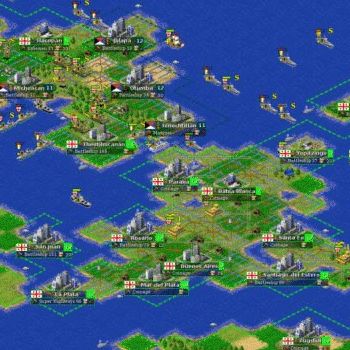Computational history is something like playing Civilization
It appears that computational history can be very realistic and scientifically plausible field of research. It somewhat reminds the legendary Civilization computer game, but explains what actually may contributed to the formation of the human societies. The essence of the Civilization game is a very simple one - the players must lead their civilizations to become a grand futuristic empire. As reported in the article linked below, the main result of the research is that the military technology and warfare is mostly responsible for the formation of the organized human societies. The first people faced a tough challenge - if they were not organized, they were simple wiped off.

In order to familiarize yourself more with the research done by Peter Turchin please visit the newscientist.com portal - see the "Real-world Civilisation game shows impact of war" article (by Hal Hodson).
